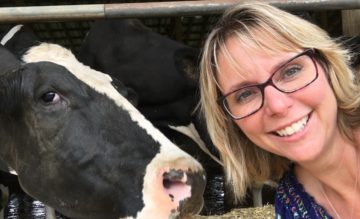Can UN action on antibiotics create a more productive public dialogue?
This week, for only the fourth time in the United Nations’ nearly 71-year history, it addressed a public health issue. The U.N. General Assembly passed a declaration aiming to slow down the spread of bacteria that have become resistant to antibiotics. Antibiotic resistance has major implications for public health, which we’re all concerned about. How we address the issue also has implications for animal care and food production.
The U.N. wants countries to develop a two-year plan to slow the use of antibiotics; monitor antibiotic use in human and animal health; and develop new antibiotics. As a veterinarian, I was very happy to read that a World Health Organization (WHO) official offered thoughtful insight when asked about antibiotics used in animals that produce food: “If we lose that ability, we perhaps begin to lose the ability to have adequate food supplies in the world.”
That’s a sobering thought – that antibiotic resistance, for all its public health threats, also possibly poses threats to the world food supply. The threat to the food supply from antibiotic resistance is often not considered nor fully understood or appreciated in the technical, complex and often confusing public conversation about animal health products used in agriculture.
Make no mistake – antibiotic resistance is a serious issue that farms and food companies aren’t shying away from. However, when some groups imply that antibiotics used in food animals are solely responsible, they do a disservice to the public debate by distorting perceptions.
Don’t take it from me alone – just look at what the Centers for Disease Control (CDC) has issued. CDC identified the most concerning public health threats from antibiotic resistant bacteria. None of the most urgent threats have any relation to farm animals. On the broader CDC list, which includes less urgent threats, only two of 18 involve bacteria that may be associated with farm animals.
Still, the concern about the public health risk of antibiotic resistance is shared by all – the public, public health officials, the food industry, farmers and animal health companies. We are engaged, paying close attention and making changes to the way antibiotics are used on the farm, while also developing innovative animal health products to alleviate the need for antibiotics. I’m pleased we are also working more closely with our partners in public health and human medicine.
It is important to remember that antibiotics have been used in farm animals for decades for the same reason they’re used in people – to treat or prevent diseases that cause pain and suffering. Veterinarians and farmers recognize that diseases can spread rapidly, so when one animal exhibits symptoms of a disease or becomes ill, animals around it are likely to get sick and may die if they aren’t treated.
The U.S. is well underway in following the U.N.’s directive. Animal health companies are eliminating the use of antibiotics important to human medicine for the purpose of promoting growth in animals. In many cases, these antibiotics will only be available under a Veterinary Feed Directive, essentially a prescription from a veterinarian, starting the first of the year.
The fact remains that using antibiotics is the ethical thing to do when animals are sick with a bacterial infection. The WHO official was right on target. We must work together – animal and human health experts – to address antibiotic resistance in a manner that protects public health and our food supply, ensuring both sectors continue to provide ethical treatment.
I welcome your thoughts and questions. Please feel free to send me an email at AskDrDorman@pahc.com or call me at 844-288-3623.

